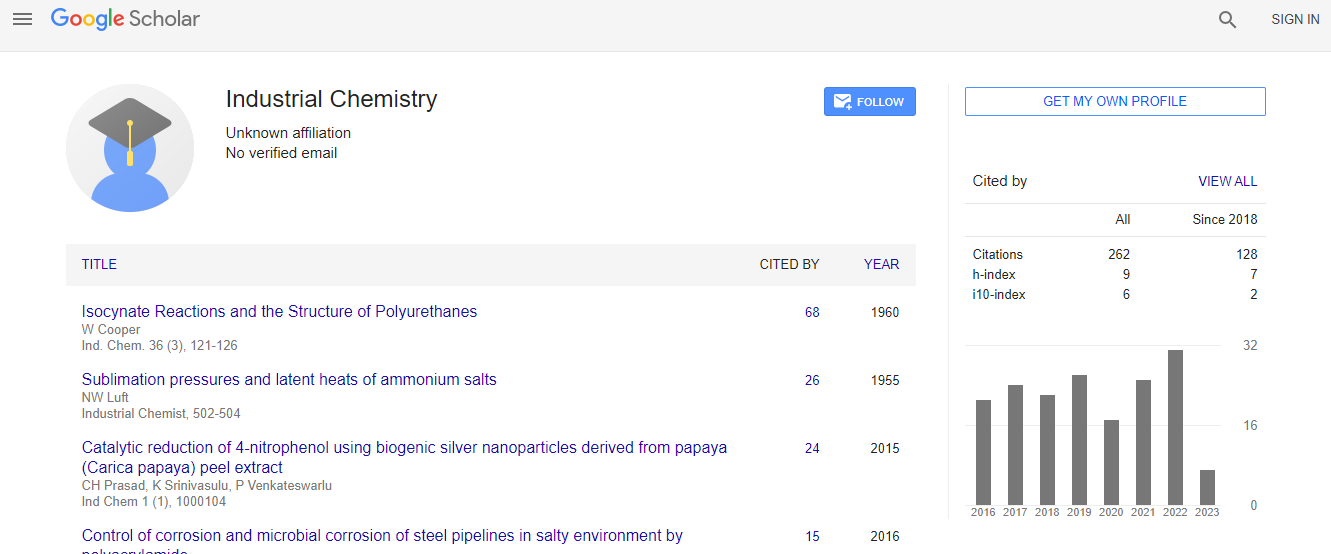Research Article
Evaluation of the Speciation Patterns and Risk Assessment of Some Heavy Metals within Victoria Island, Lagos, Nigeria
Okafor OF*, Okoye PAC, Umeobika UC and Abugu HO
Department of Pure and Industrial Chemistry, Nnamdi Azikiwe University, Anambra State, Nigeria
- *Corresponding Author:
- Okafor OF
Department of Pure and Industrial Chemistry
Nnamdi Azikiwe University, Awka
Anambra State, Nigeria
Tel: +2348063498395
E-mail: feloksys@gmail.com
Received date: October 31, 2015 Accepted date: November 19, 2015 Published date: November 26, 2015
Citation: Okafor OF, Okoye PAC, Umeobika UC, Abugu HO (2015) Evaluation of the Speciation Patterns and Risk Assessment of Some Heavy Metals within Victoria Island, Lagos, Nigeria. Ind Chem Open Access 1:111. doi: 10.4172/2469-9764.1000111
Copyright: © 2015 Okafor OF, et al. This is an open-access article distributed under the terms of the Creative Commons Attribution License, which permits unrestricted use, distribution, and reproduction in any medium, provided the original author and source are credited.
Abstract
Sequential extraction was carried out to determine the speciation and mobility of total and potentially bioavailable heavy metal concentrations in the soil of Victoria Island, Lagos. The soil samples were collected from four strategic locations within Victoria Island, Lagos. Samples were tested for their total metal concentrations of nine selected heavy metals using Atomic absorption Spectrophotometer (AAS) and Energy Dispersive X-ray fluorescence (EDXRF). The metals analysed include Mn, Cu, Fe, Pb, Cd, Cr, Ni, Zn and Co. Target extraction fractions includes; water soluble, Carbonate bound, exchangeable, bound to iron and manganese oxide, bound to organic and sulphide and residual fraction. This was undertaken to assess the environmental fate of these trace metals. The modified form of the Tessier method of sequential extraction was used. The proportion of the mean metal concentrations of the bio-available metals follows the order Cr>Ni>Cu>Zn>Pb>Mn>Co>Fe>Cd. From the trend, it is evident that the results revealed that iron though with the highest concentration at Victoria Island, is the second to the least bioavailable metal in the location, about 32% was found in its bio-available form. Although Cd contributed least to the bio-available content, a percentage of about (30%) was found in the bio-available fraction. Cr has highest percentage Bioavailability of about (53%) for Victoria Island while that of Ni is about (55%). This suggests that Cr, Ni, Cd and Pb were highly mobile and, since it is known to be toxic, its concentration in the bio-available form constitutes an environmental threat. The contribution of metals bound to residue was found to be high; that is about 60% of the non-bio-available metal contents. From statistical treatment, a correlation was drawn between the two array of data generated from the two different methods i.e., AAS and EDXRF used for analysing total selected metals; giving rise to a correlation coefficient of 0.9928. From the result, it can be deduced that both methods are invaluable in elemental analysis and environmental study because they showed neither significant difference nor variation.

 Spanish
Spanish  Chinese
Chinese  Russian
Russian  German
German  French
French  Japanese
Japanese  Portuguese
Portuguese  Hindi
Hindi 